Many people think that barefoot running and trail running don’t mix. However, a community of enthusiasts and I beg to differ!
If you’ve made it this far, I’ll skip the pitch on the benefits of barefoot running.
Let’s focus on discovering the ideal barefoot trail running shoe for you!
In this article, I’ll share my top 4 trail running shoes and I’ll also detail which shoe is best suited for whom and under what conditions they excel.
Xero Shoes Mesa Trail II
Width: Average
Stack height: 6mm + 3.5mm insole
Weight: 8.2oz / 232g Mens US9
Vivobarefoot Primus Trail FG
Width: Average
Stack height: 2.5 mm + 4 mm lugs + 3mm insole
Weight: 8.9 oz / 250 g Mens US9
Affiliate Disclosure: By clicking through the links on this page and purchasing the products, you’ll be helping me out. This is done because I receive a kickback from the sellers at no extra cost to you! Thank you so much for supporting us!
Last year I ran most of the Colorado Trail (500 miles) in the original Mesa Trail, and they’re still in my shoe rotation!
I didn’t think any shoe could top the Mesa Trail for ground feel, grip, and fit – but I was wrong.
In the end, Xero Shoes decided to better themselves with version 2.
Which minimal running shoe is for you?
Take a quick 5-question quiz to identify the perfect minimal running shoe for your feet! You'll get both road and trail options based on your answers!
The main upgrades focused on durability.
Admittedly, the original Mesa Trail was a soft, super flexible barefoot trail shoe. And that didn’t always work, especially when flying down technical rocky trails, and that’s why Xero Shoes needed a version 2!
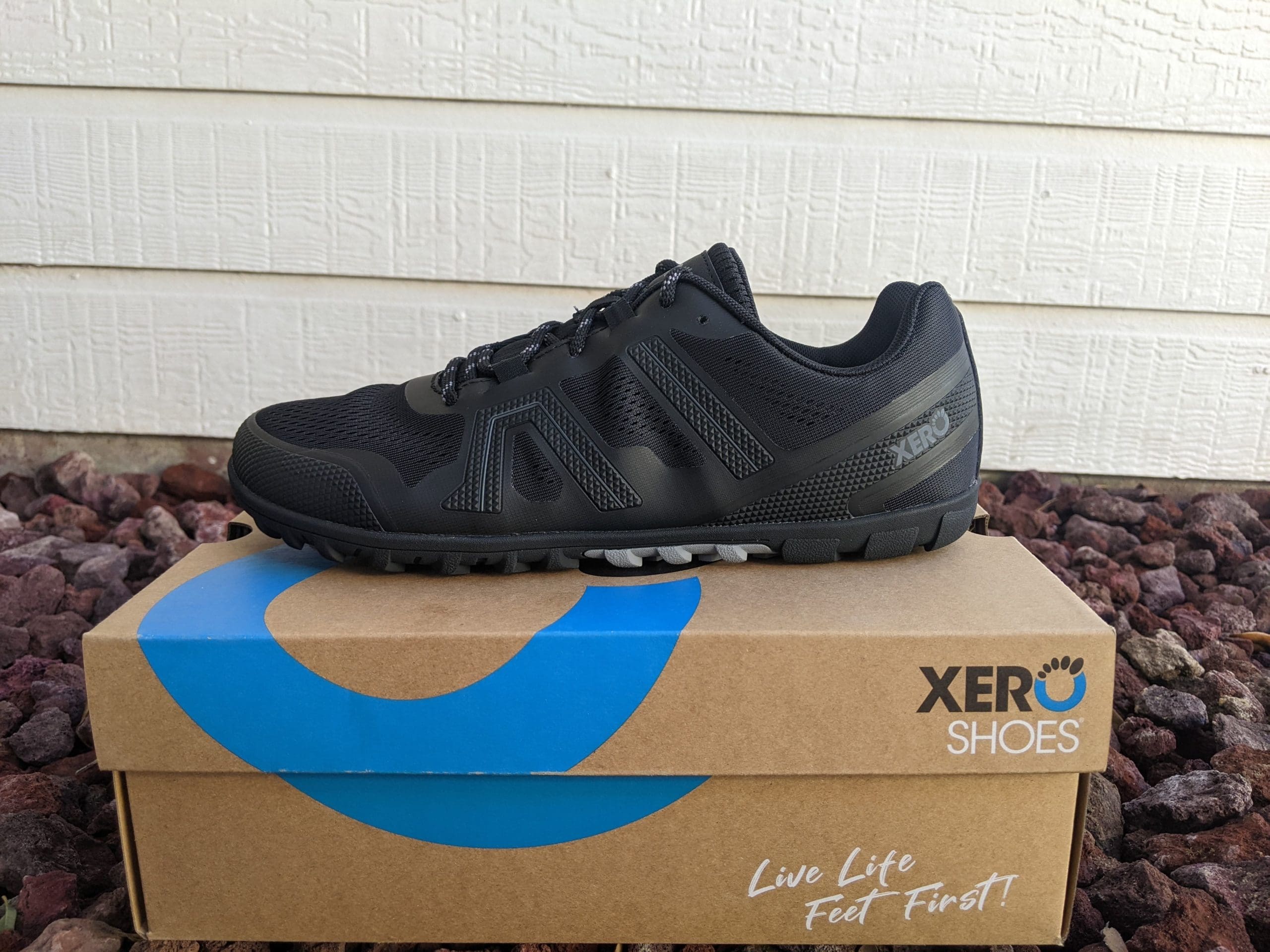
Is the outsole and upper protective over rugged trail terrain?
The outsole on version 2 stiffened slightly, allowing you to step on sharp rocks and not feel a shearing pain. That means some barefoot flexibility has been lost in the Mesa Trail II, but this compromise had to be made. I’m so confident in this new version that I’m taking them on my upcoming technical mountainous 50 km race.
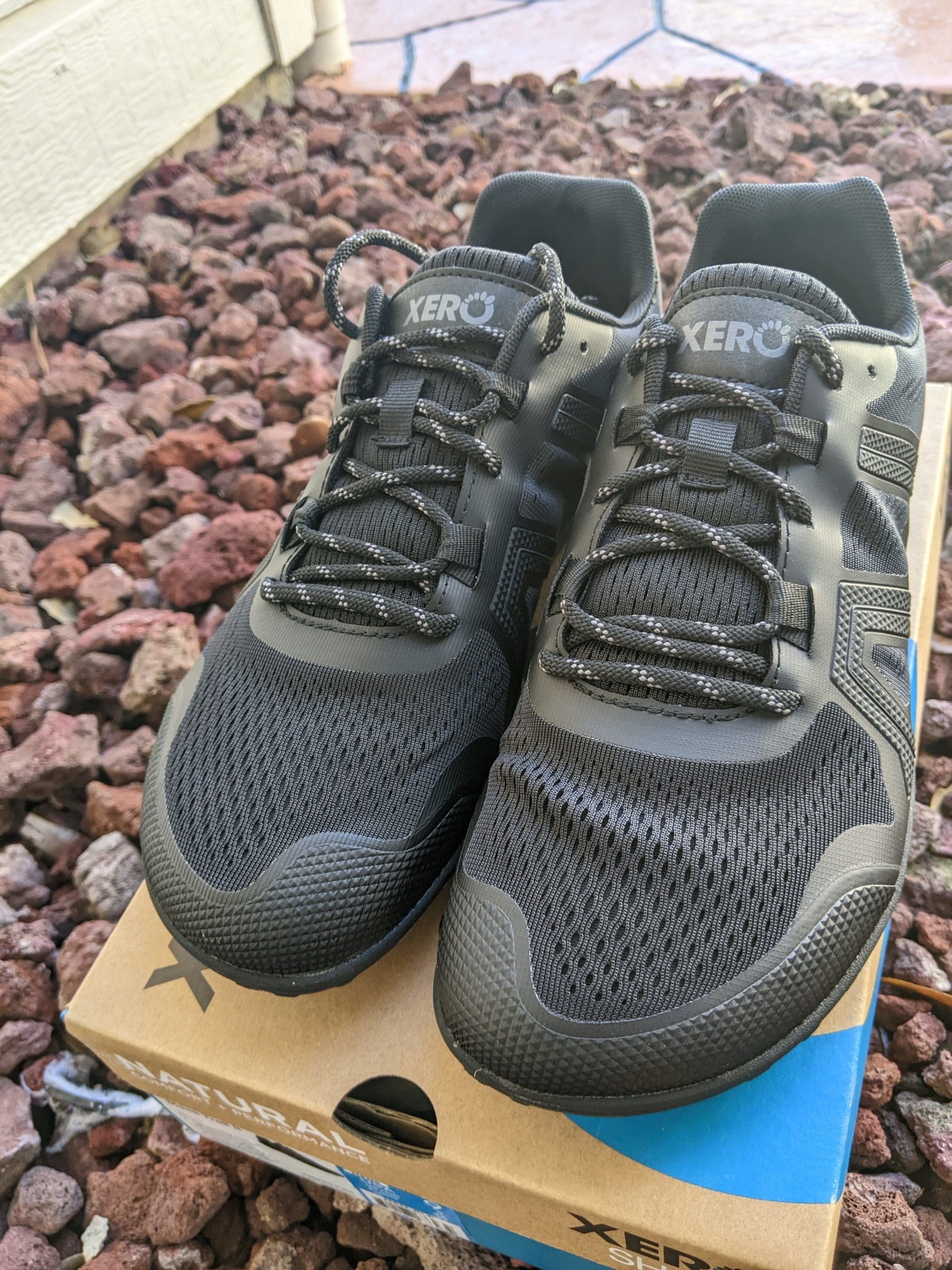
The overlays protecting the side foot are minimal but enough. And the toe box protects against unwanted stone kicks. The shoe’s lifespan is extended in extreme conditions thanks to the semi-flexible plastic that protects against rock scuffs and scrapes.
What conditions is the Mesa Trail suited to?
The outsole is semi-aggressive, with 3.5mm rubber lugs to cut into muddy conditions. I’ve taken this shoe out in the dry, the wet, and the snow! And it works in all conditions. The only time I’d opt for a more aggressive shoe would be in the bogs of the UK, but almost no US-based shoe company has options for those conditions.
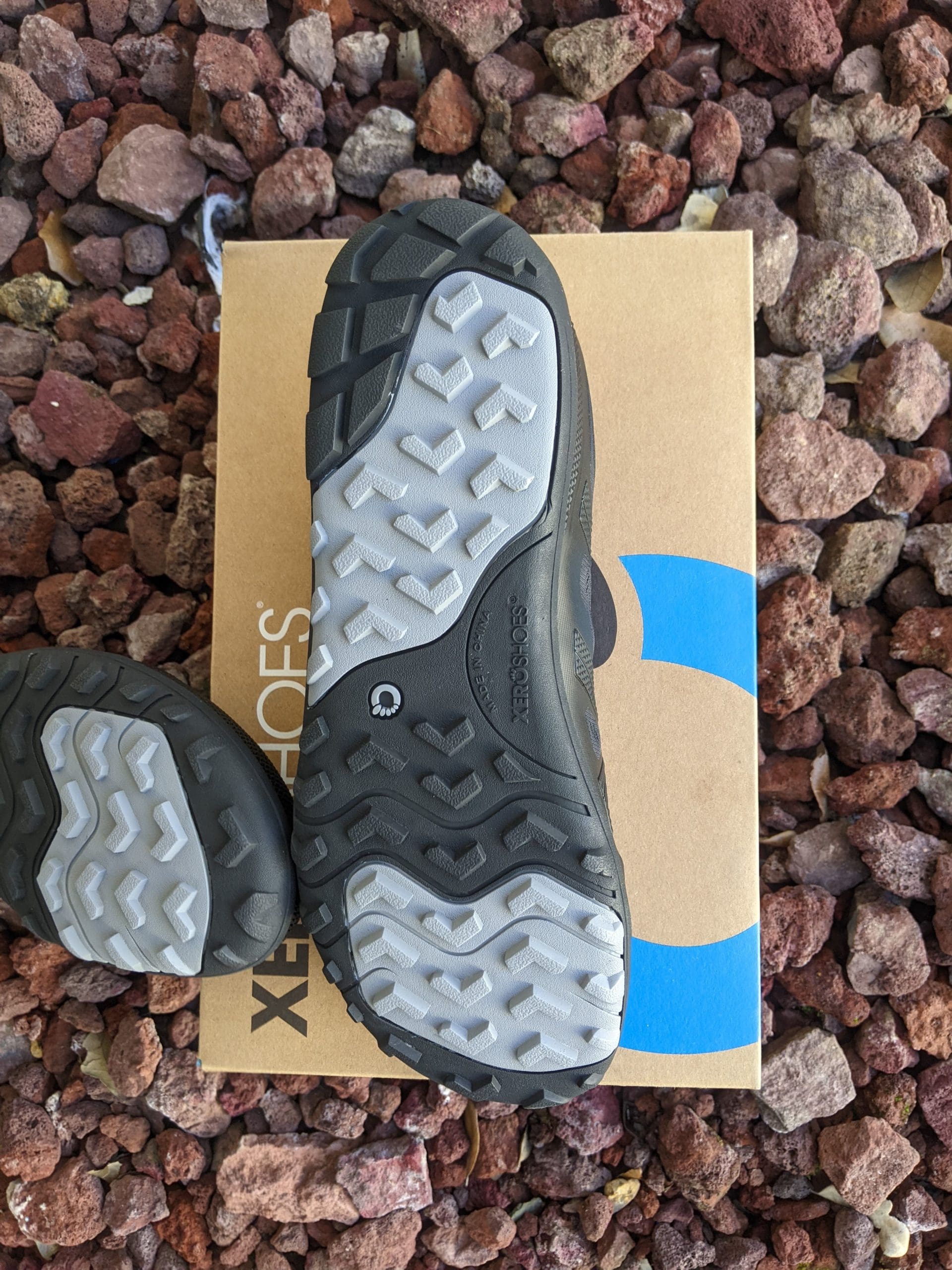
Who’s the Xero Shoes Mesa Trail II for?
- Fit: Wider heel and midfoot and an average toe span. It will not work for those with shallow feet.
- Conditions: Dry to moderately wet weather.
- Feel: A true barefoot feel, with enough protection to call it an aggressive trail shoe.
Xero Shoes Mesa Trail II
$119.99
Next up! Vivobarefoot.
Another top favorite of mine, but they don’t get in my rotation quite as much as I’d like.
As with nearly any athletic Vivobarefoot review, I start by saying.
How do the Vivobarefoot Primus Trail FG fit?
If you have a more voluminous bridge, or your width starts from the back near the ankle, Vivobarefoot may not be the brand for you.
I make them work by removing the insole to get a little extra room.
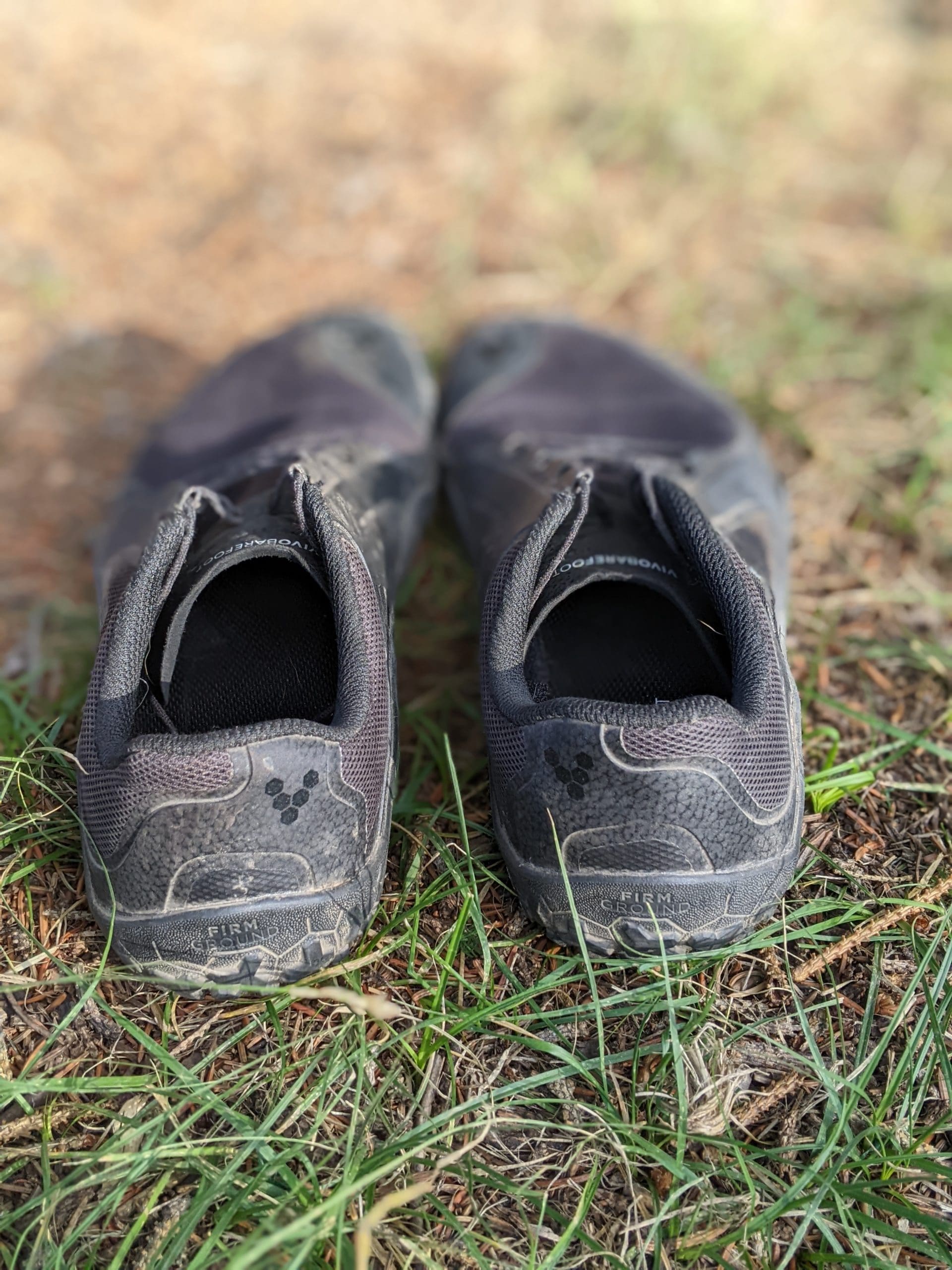
The upper is tough and unforgiving, which is great for durability and lockdown, especially in a trail shoe, but if they do not fit right, you’ll have a challenging ride.
But if you find a good fit, you’ll have no heel slipping, no movement forward or backward in the shoe; it’s just a dream.
It’s important not to tighten the shoe excessively, as this can create pressure points. Simply keep the laces taught without pulling on them too hard. It’s also helpful to loosen each eyelet to release any pressure points.
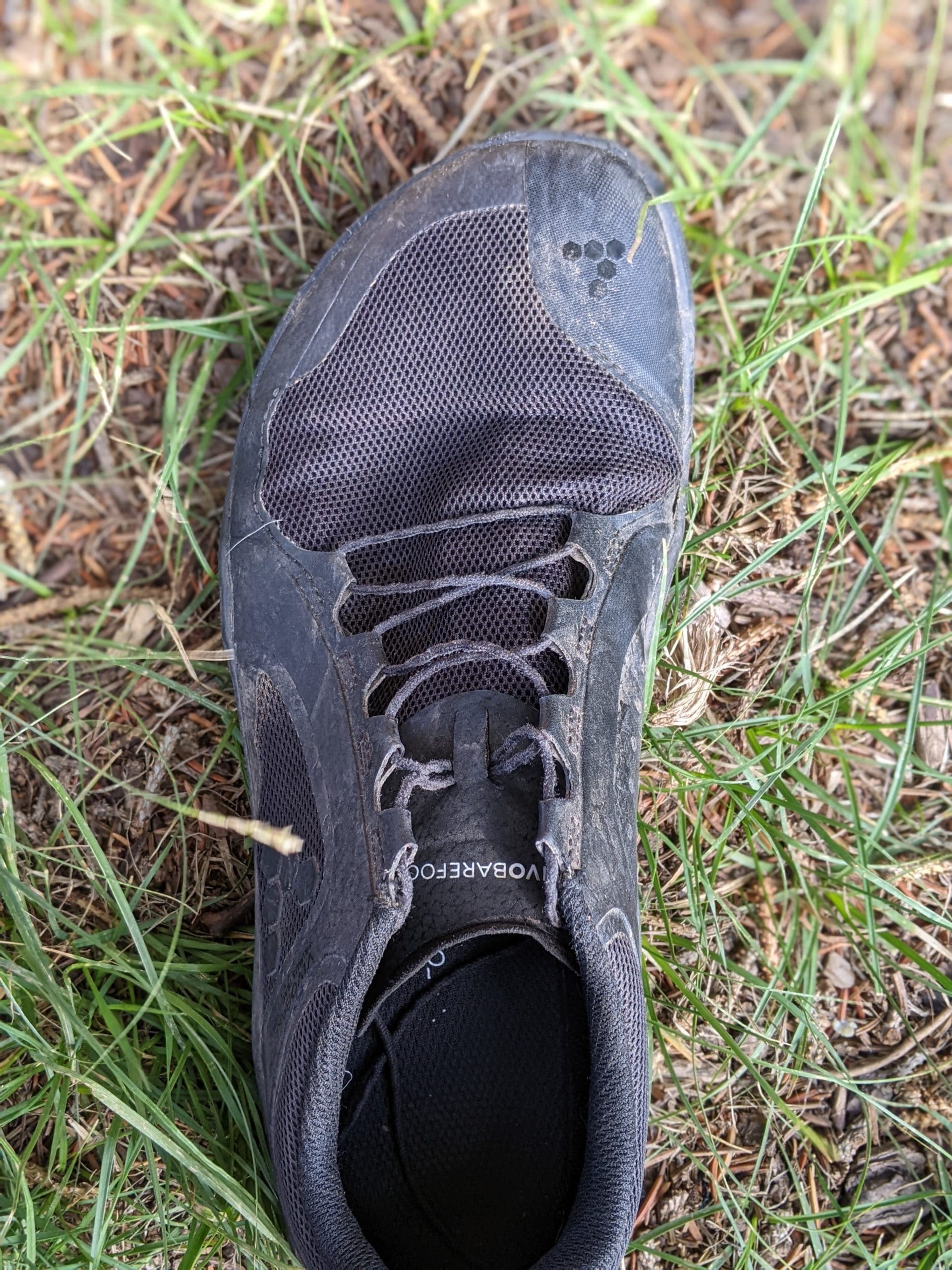
What is unique to Vivo is the ample room for the big toe. You’ll see almost no taper on the big toe side of the shoe, and it’s almost square, which suits those with a wider toe splay.
How does it feel underfoot?
They’re close to the ground with 2.5mm base rubber and 4mm lugs! And that also means they are superbly flexible.
For a general feel, I’d say these shoes are fun! I feel super secure in the upper, and I’m confident in planting my foot and knowing it won’t slide around.
Again because of this tougher plastic/rubber upper, there is reduced breathability. And with these shoes being designed in England, it’s not such an issue there, but if you’re in the Texas heat, take that in to count.
Who’s the Vivobarefoot Primus Trail II FG for?
- Fit: Those with a fan-like foot shape, narrower at the heel and wide at the toe, will find the shoe great. Just be wary of the lack of depth of the shoe.
- Conditions: Dry to moderately wet weather.
- Feel: A true barefoot feel, with excellent protection all around.
Vivobarefoot Primus Trail FG
$175
I’ve been diving into Freet this year and I’ve got to say I’m impressed.
The Freet Feldom is one of my favorites in the lineup because it’s so versatile.
Whether you’re hitting the mud, the rocky trails, or loose gravel, it handles them all.
Yes, it’s still suited to wide and deep foot types, but if that’s you, it’s a banger!
Let’s answer some of the top questions.
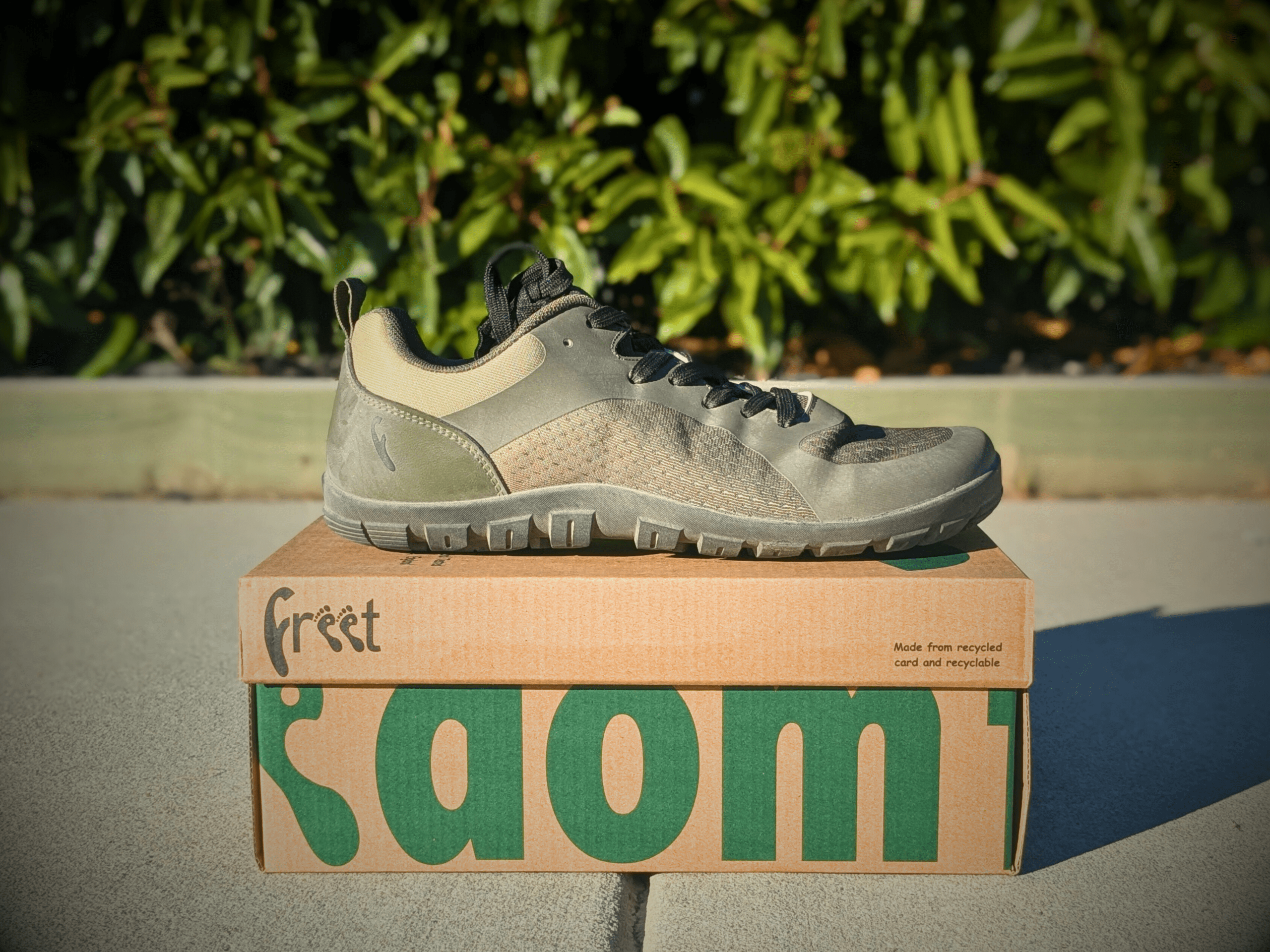
Can you spread your toes in a Freet Feldom?
The toe box design is a key feature, with ample big toe space and decent depth for optimizing toe splay. This spacious design provides ample room for toe splay, benefiting the big toe, which can move freely without restriction. The squared-off shape of the toe box enhances this freedom, ensuring that the toes are not cramped or forced into unnatural positions.
How much ground feel does the shoe have?
A stack height of approximately 10mm balances protection and ground feel. This slight elevation protects your feet from sharp objects on the trail, like rocks and roots, while allowing you to feel the ground underneath. It works well for those who like the benefits of barefoot design but also want some protection. I never hesitate to take the Feldom into any conditions I may encounter.
This Feldom 2 is suited to muddy or firm surfaces. The outsole features 4mm lugs designed to provide an ideal balance between traction and natural ground contact. These lugs are strategically placed to enhance flexibility, enabling the shoe to adapt to various terrains without sacrificing grip. Having used these shoes in muddy conditions and on harder rocky surfaces, I’m pleased to say they are a great all-rounder for many trail conditions.
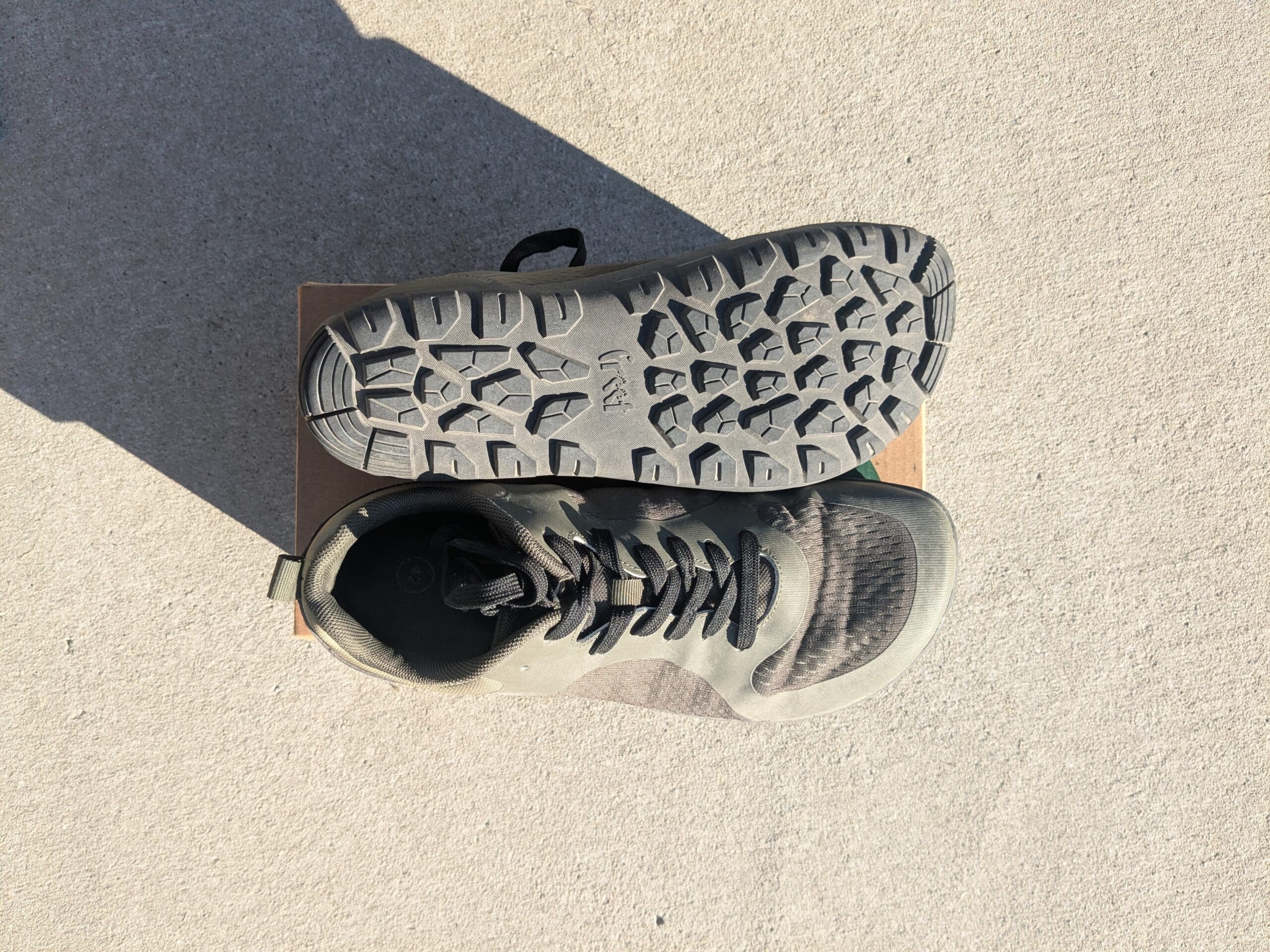
Is the Freet Feldom 2 Durable?
The upper may have an upgraded feel, but I fear we may see less durability with the design. While this updated mesh enhances flexibility and breathability, it may not withstand sharp rocks and scuffs. The mesh seems very lightweight, and it’s backed with a strange foam. Compared to previous versions, which featured more substantial overlays for added protection, you may just have to keep your fingers crossed when out on the trails.

We see the same outsole as the original Feldom, which has proven to be a top choice. The 4mm lugs are designed with a large surface area, which helps reduce wear when hitting hard surfaces. Additionally, the rubber appears durable, showing little to no flaking or quick wear. Freet has successfully created a reliable product.
Who’s the Freet Feldom 2 for?
Fit: Those with a wide midfoot and a wide toe splay. Great for those with a deeper foot.
Conditions: Wet, muddy ground.
Feel: Grippy and retains it’s flexibility.
Freet Feldom 2
$110 (10% Discount Code : BRR10)
I know, I know. Altra’s aren’t really barefoot shoes.
I agree with you! But that doesn’t mean you can’t have a cushioned shoe in your rotation for those aggressive trails or easy runs.
If you still need some convincing, read my philosophy on barefoot running.
The Superior 6 has only just been released, and I’m already impressed with it.
The new upgrade of the outsole rubber has transformed the shoe from good to awesome.
Pair that with a slightly firmer midsole; we will hit higher milages than previous versions.
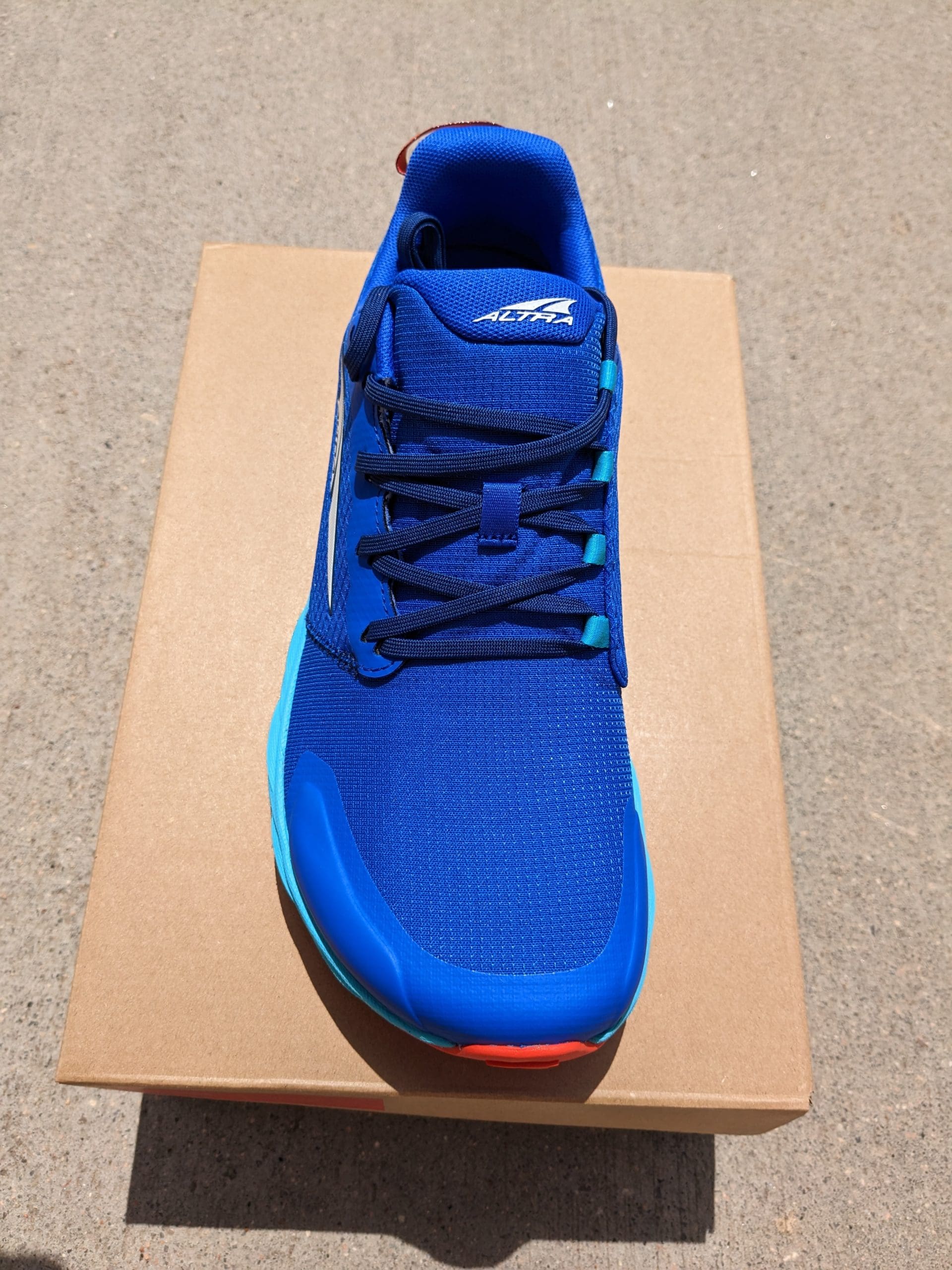
Is the forefoot wide enough for great toe splay?
The forefoot is nice and wide and beautifully squared towards the big toe. Altra’s foot-shaped toebox still exists! It’s wide enough for super toe splayers and even fits my stupid bulbous big toe.
How deep are the Superiors?
But beware, the shoe isn’t that deep at all. If you have volume in your feet, you will feel a lot of pressure on the top of the foot in Altra’s. For me, the Superior 6 is no different. So my super sneaky trick is to replace the insole with something thinner, like a Xero Shoes insole.
How does it feel underfoot?
The responsiveness felt “poppy,” like I was bouncing forward with nothing holding me back. The new shoe has denser foam, enhancing bounciness, and works in conjunction with your foot and ankle muscles.
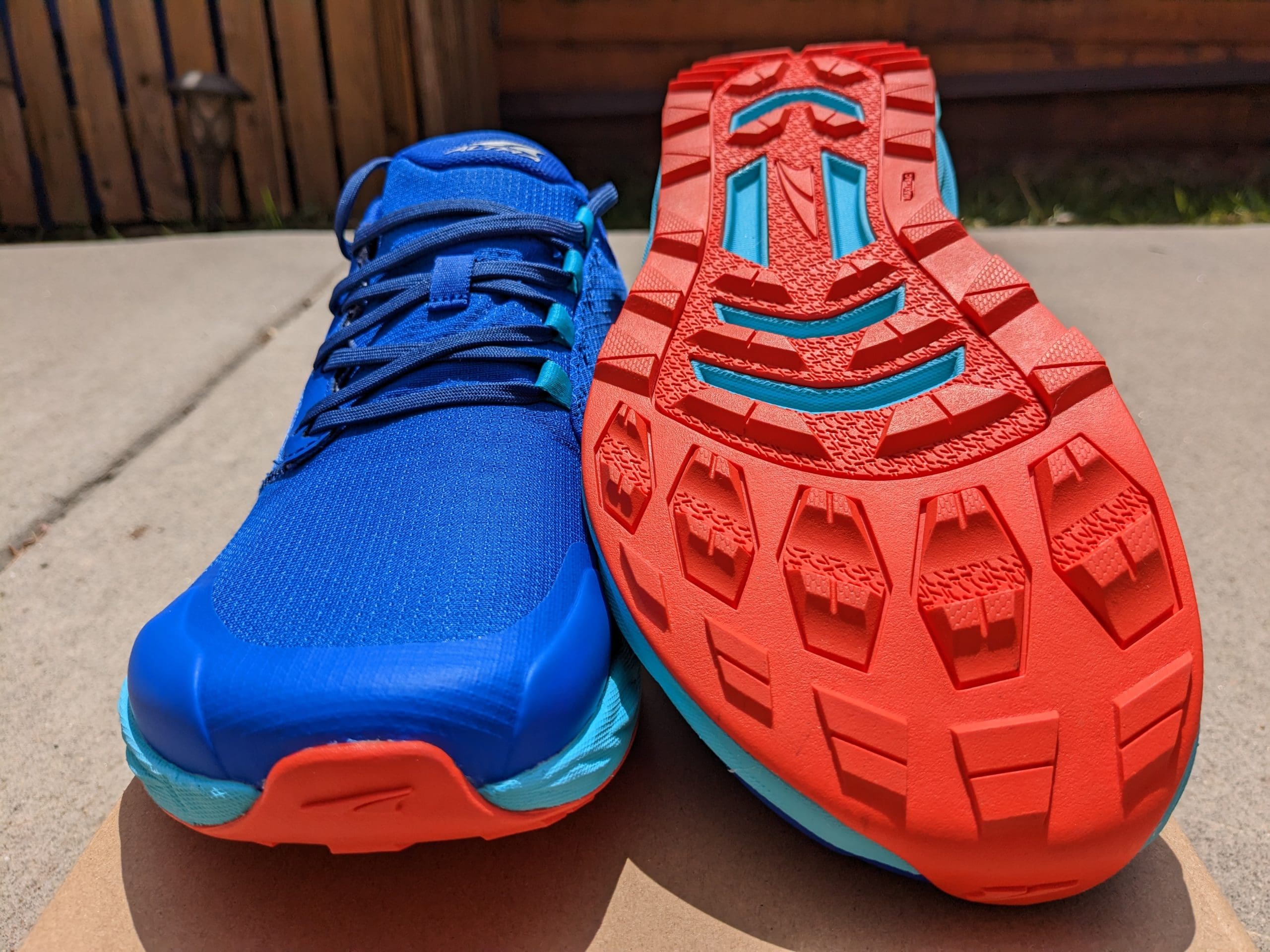
The redesigned toe box is much more stout! If you kick a rock, that means more protection for the shoe and your feet. It also helps keep the shape of the toe box nice and square over the top of the toes, even if we could do with a bit of wiggle space.
And that’s a theme running through the shoe. It does mean it’ll take a little more time to break in, but in the long run, that’s ok.
Who is the Altra Superior 6 for?
- Fit: A shallow foot with a wider toe splay and fitted midfoot.
- Conditions: Dry to moderately wet weather.
- Feel: Some flexibility and ground feel, but not a true barefoot shoe. Great for dipping your toes in the water before going 100% barefoot.
Altra Superior 6
$130
The fit is the biggest factor when choosing between these barefoot trail shoe options.
As you have seen, Xero Shoes fits differently to Vivobarefoot and Freet, Altra is unique too.
If you have a deep and wide midfoot, I’d always recommend Freet, but that’s not to say that Vivobarefoot wouldn’t work if you remove the insole.
If you don’t have a wider toe splay, the Xero Shoes Mesa Trail II is a solid choice for maximum ground feel.
If you have a wider toe splay but a shallow foot, Vivobarefoot Primus Trail is the way to go.
And as long as you don’t have super deep feet, the Altra Superior 6 fits most people out there!
You can read the full reviews for all these trail shoes right here! Dive deep to find the right shoe for you!
Xero Shoes Mesa Trail II Review
Vivobarefoot Primus Trail II FG Review
Freet Feldom 2 Review
Altra Superior 6 Review
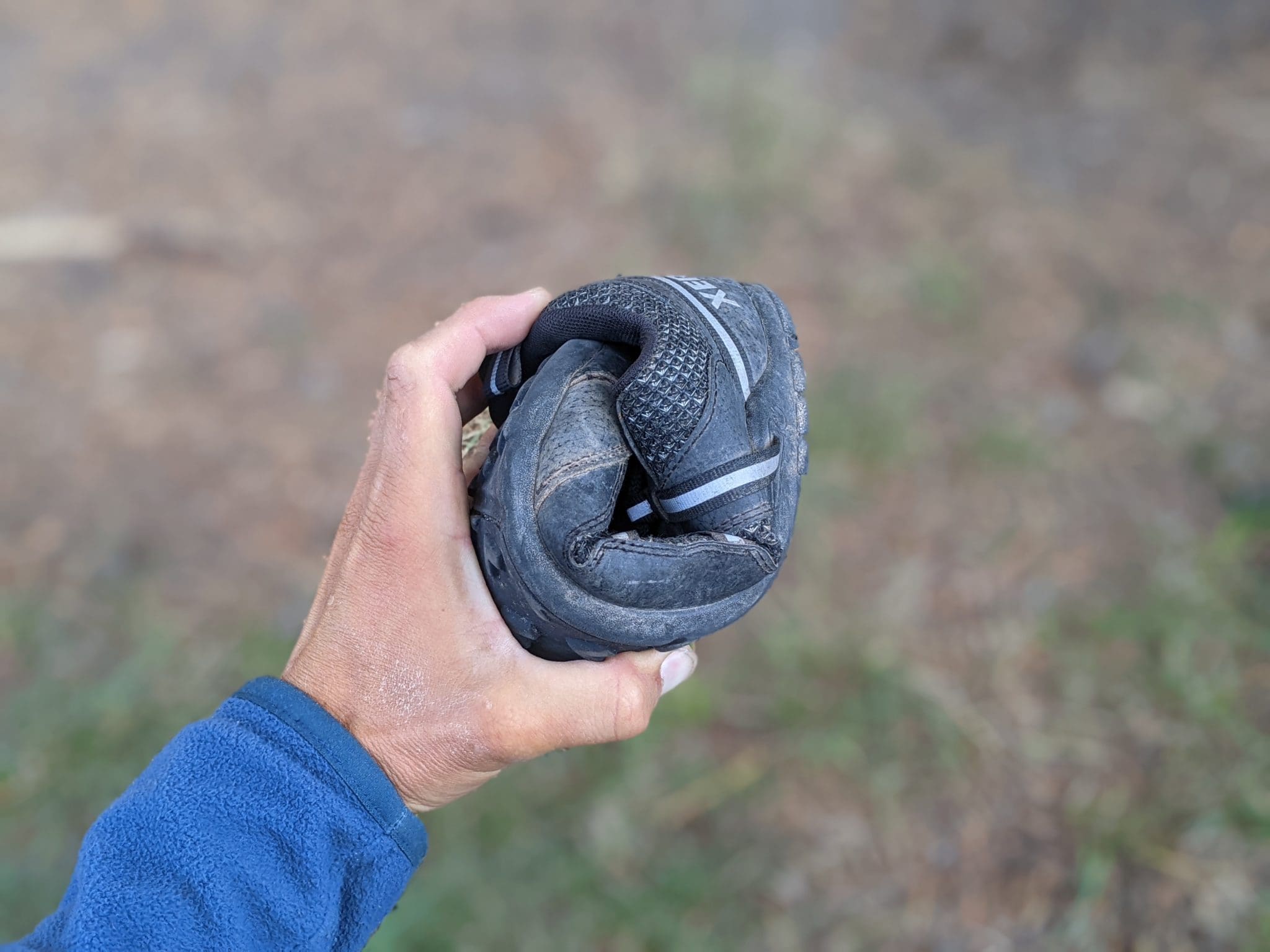
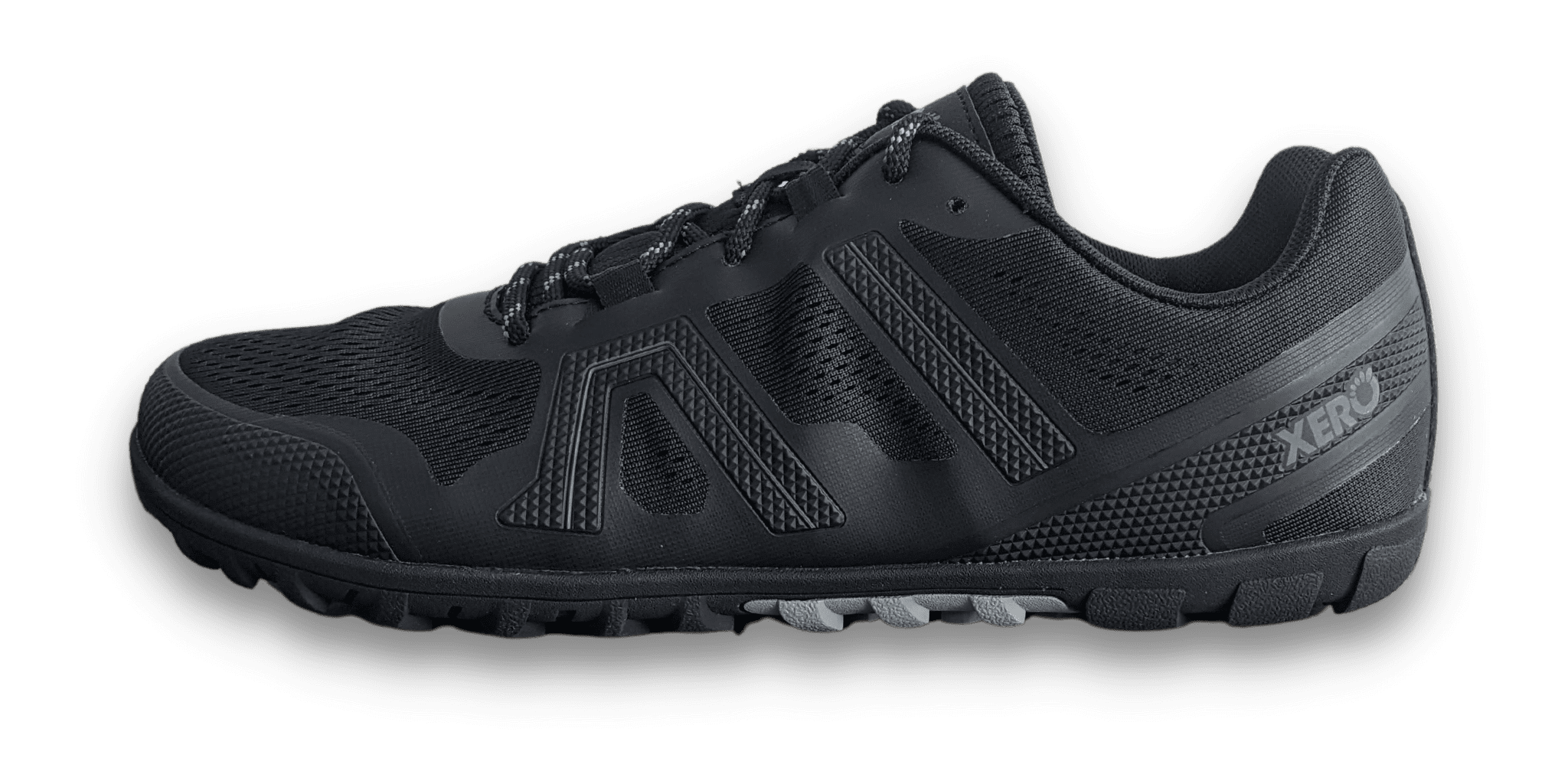
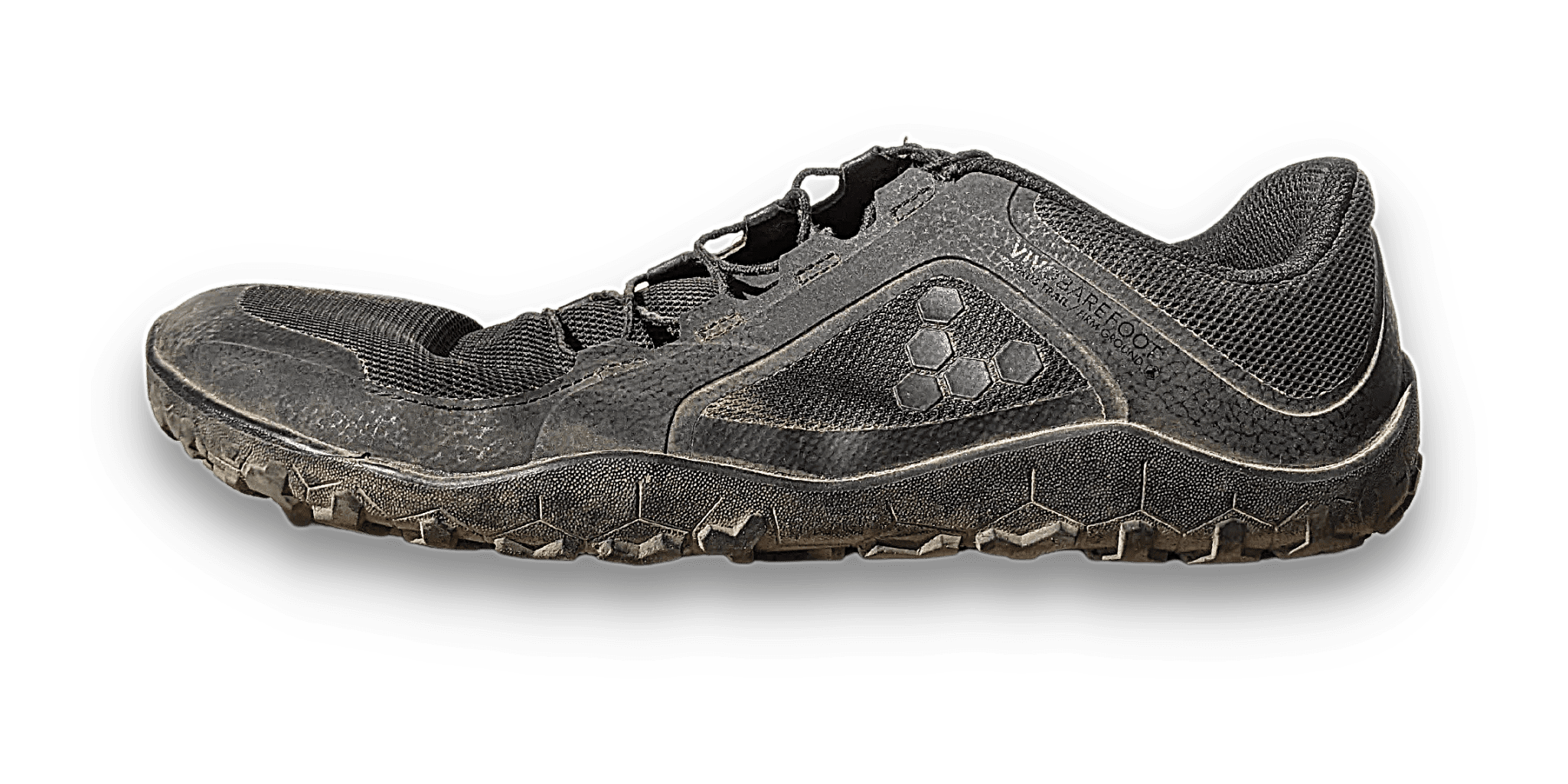
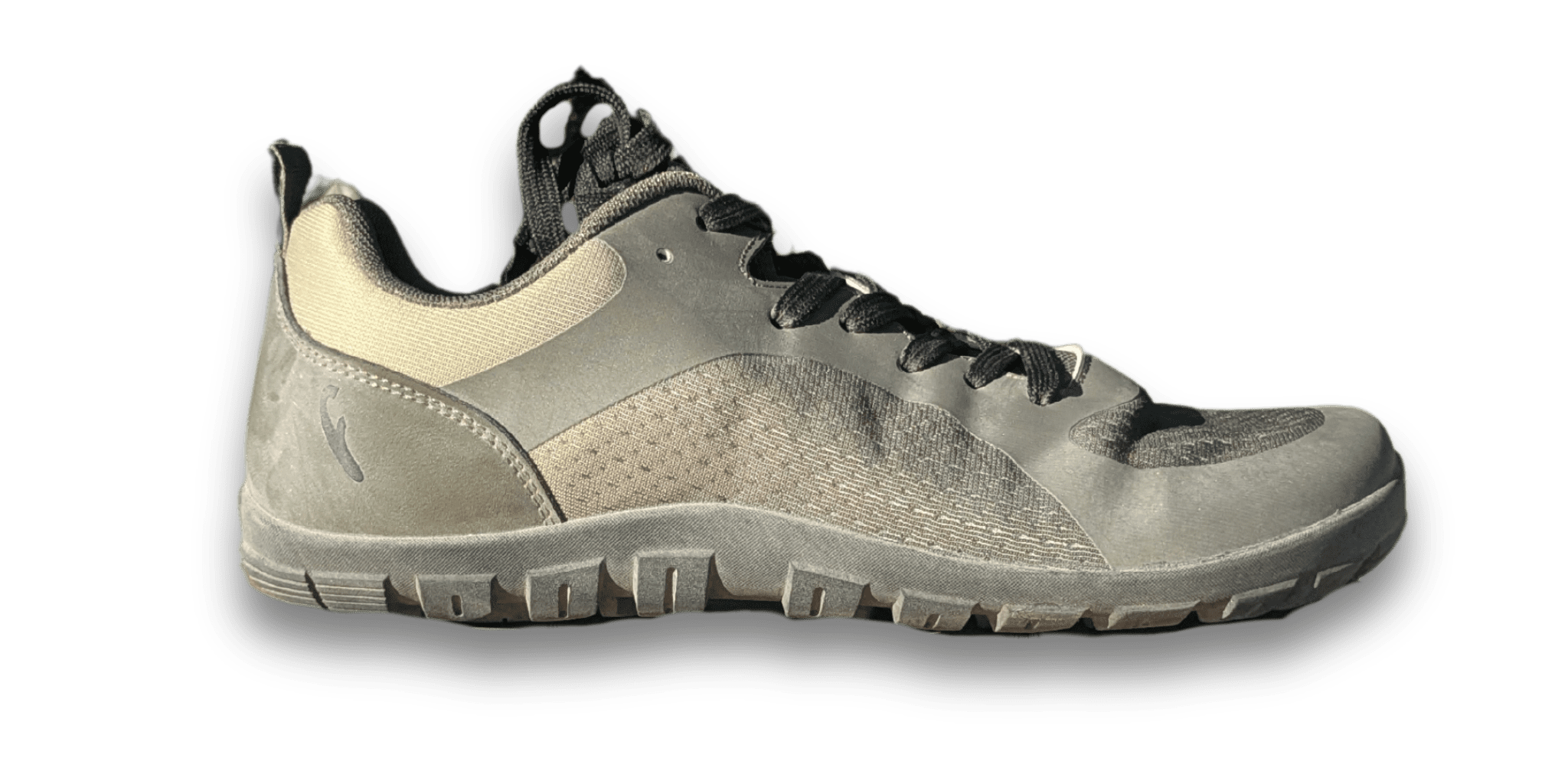
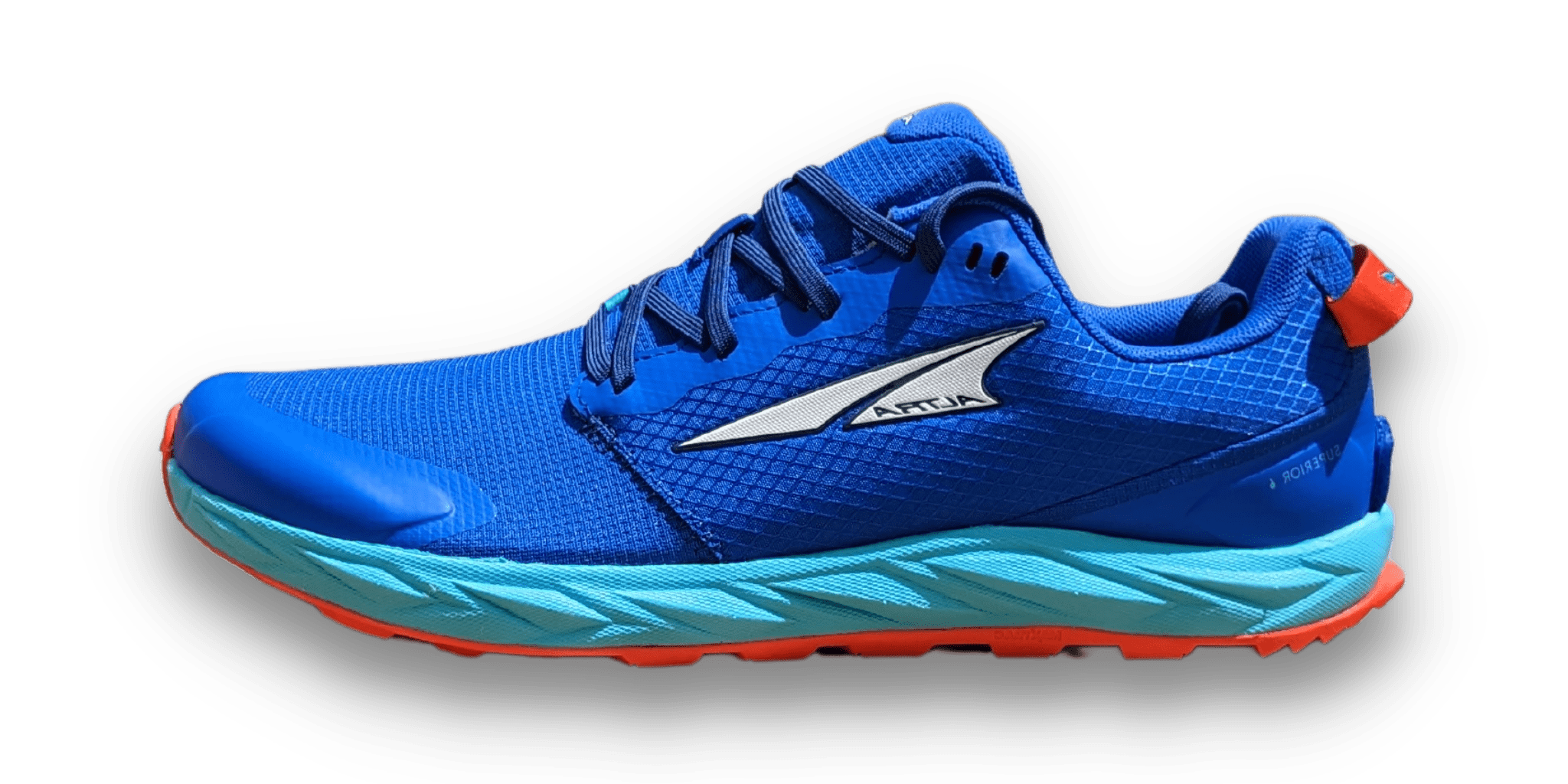

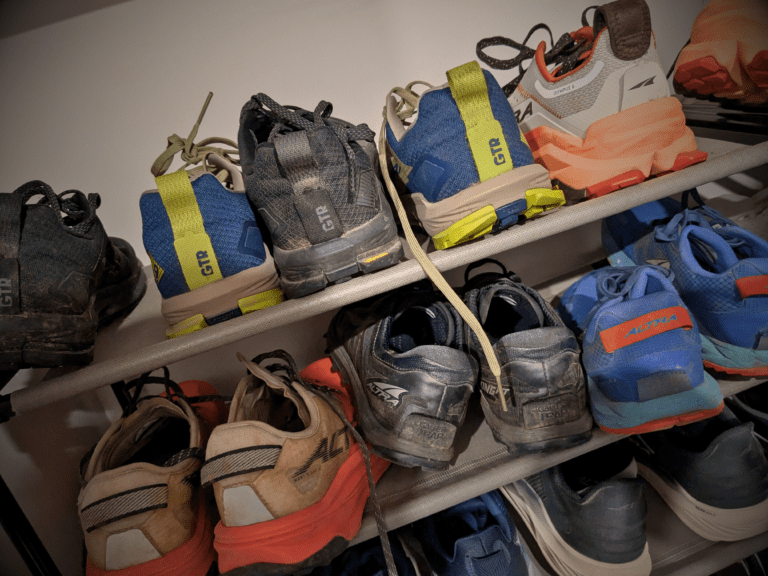
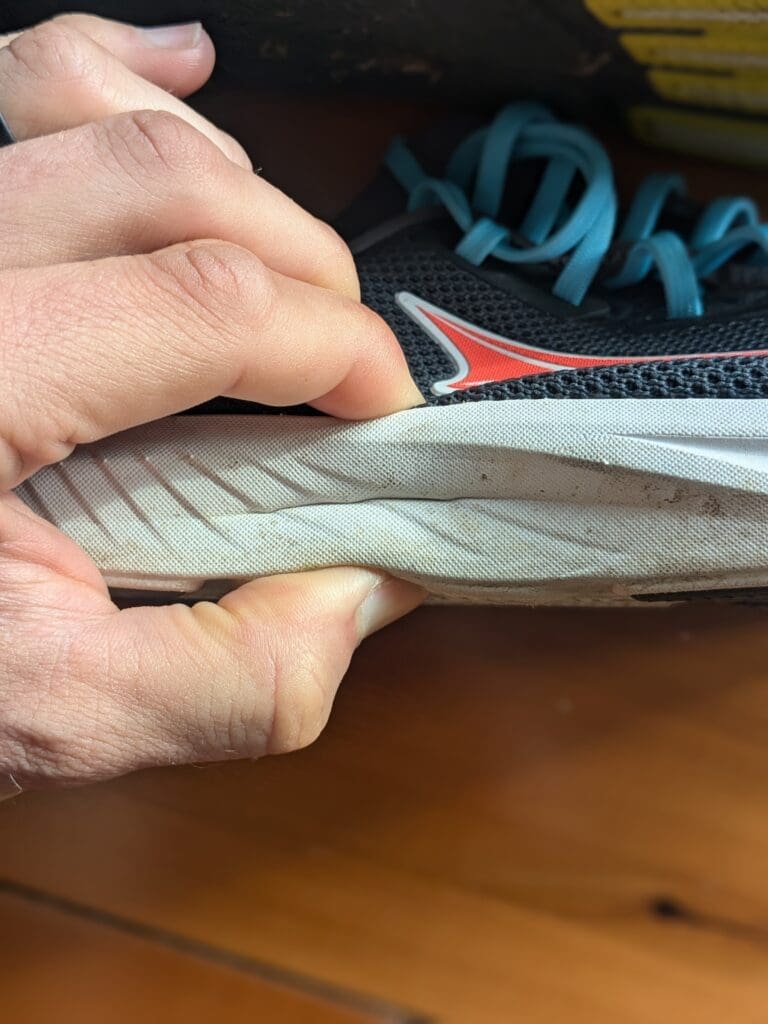
Nice review. I miss 5 finger shoes in your top 5. Any reason why? I have the 5 finger v run and the fit very nice. But sometimes too slippery for trails so I’m looking for a trail shoe.
It’s a good point! I’ve got little experience with VFF other than selling one casual model when I worked at a running store.
If you have any models you could suggest any why, it’d be a great help for me, and others reading this too!
Thanks
Te recomendaría las FiveFingers V-Alpha, lleva una suela Vibram con compuesto Megagrip, que agarra tanto en seco como en mojado, más que ninguna otra suela que haya probado en mi vida. Además de una duración media de 800 km, para un peso el mío, de 84 kg , y 190 metros.
La V-Run es para terreno completamente seco, porque en mojado es fácil resbalar.
> I would recommend the FiveFingers V-Alpha, it has a Vibram sole with Megagrip compound, which grips both wet and dry, more than any other sole I’ve tried in my life. In addition to an average duration of 800 km, for my weight, 84 kg, and 190 meters.
The V-Run is for completely dry terrain, because in the wet it is easy to slip.
A vote for five fingers, I feel the free toes increase traction and toe comfort. Xero is my alternate day shoe. 80 years old 35 yrs running with barefooting past 20
There are many five finger fans out there! I actually quite liked the feel when I tried a road pair. But I’m not convinced about the sizing due to the toe construction. If they work for you though, that’s what’s important!
For a barefoot trail racing shoe I really like the Merrell MTL skyfire 2. It is a feat of engineering and really just feels like your feet with vibram lugs! I find xero shoes to be heavy and I like altra superiors but on steep hills the zero drop can sometimes cause trouble. But to be fair, as I said its a racing shoe (read expensive) so not a completely fair comparison. I also like the merrell long sky 2 which has a great fit and amazing ground feel.
Interesting! I’ve been looking at the Skyfire’s, but I’ve been put off by the toe box and the drop. I’m 99% certain it’s going to be too narrow for me. What’s your experience with the toe box?
I’m surprised that Xero shoes are too heavy for you? The Mesa Trail II are ~7.8oz (220g) for my size, which is pretty good for a trail shoe.
Hi Nick, thanks so much for sharing your thoughts and ideas on these barefoot shoemodels. I have recently had the pleasure of trailrunning in Sweden using the Xero Shoes (Mesa Trail) and loved the feel on my feet. However, and I would love to hear your thoughts on this, on the very technical parts of both the trails (with a lot of vast rocks and bolders) I missed a so called toe-guard on these shoes, bumping into rocks several times which in the end really started to hurt my (primarily) big left toe. I have asked the store where I bought the xero shoes if they have any idea on a good barefoot shoe that does have protection for the toes, but didn’t get a clear answer. Would be willing to share your thoughts on this with me?
Thanks in advance, Rick
Hey Rick! Glad you like the Mesa Trail’s!
As for your question, it all depends on the version of Mesa Trail you have? Version 2 is slightly more protective in the toe box, but it’s by no means a plastic protective cap. I like it that way too.
I know it’s not fully barefoot, but the new Altra Superior 6, has a nice robust toe cap. One of the standout features, to be honest. This is my choice when I know the trail will be very rocky with the potential of stubbed toes.
I may have 1 other option for you, but I’m technically not allowed to talk about it yet! But keep your eyes peeled on my Instagram or the Website, and you’ll see an announcement soon!
Thanks so much Nick, this is really helpful. I will have a look at the Altra Superior 6 and as from today will follow your posts on Instagram, eager to see your annoucement!! Thank again, have a great day!
I read elsewhere the Xero Mesa Trail II are your favourite trail all-rounders [though in case of tougher terrain you’d advice the Xero Scrambler Low, which give less ground feel but add that needed protection] But, from this article, apart the ground feel, the Vivobarefoot Primus Trail FG get better vote for every other aspect compared to the Xero Mesa Trail II.
So if they fitted good, they’d be a better shoe for “standard” (forest, gravel) trails?
It find it really hard to move away from the Mesa Trail II because of the amazing fit (for me) and the great ground feel. But it’s true, when it comes to anything rocky, that ground feel is a draw back.
That’s when I’d reach for the Primus Trail FG, or Scrambler. Or even through the Superior into the mix.
Max ground feel + great fit = Mesa Trail II
Some ground feel + sub-optimal fit = Primus Trail
Less ground feel + Good fit = Scrambler Low or Superior
I say, sub-optimal fit for the Primus Trail personally, because it cannot find a happy medium between enough toe room depth, and forefoot lock down. The stiffer materials mean that it’s not possible to optimize the lacing for fit in specific areas. That’s the complete opposite to the Mesa Trail II, which fits like a glove.
I hope that helps somewhat?
How did you give the Merrill such a low score for durability and protection? Your review states you didn’t even test for durability and I’ve had mine for like eight months and they are holding up great. And for protection, it’s a barefoot shoe. It’s kinda the point that there isn’t protection so really it should be as high score. If it protected your foot and ankle wouldn’t that be a hiking boot?
The durability score is based on analysis of materials and build. Among other things, because the Vapor glove has a thin upper, and uses a softer outsole I believe it would not last as long as the other shoes on this list.
For the protection score, you could use the “barefoot” argument for all the shoes on this list. But when we compare the protection between the shoes, it’s clear that others such as the Vivo, and Superior provide many more feature such as tough protective toe caps, tougher outsoles that wrap up around the foot, and heavier use of over lays. This is neither a good, nor bad thing, instead this means shoes with a higher protection score work better in situations such as mountain running and rocky terrain.
I hope this helps explain the scoring.
Thanks
Hello, thanks again for your articles, I never miss a single one. Would it be possible for you to write more about running sandals? I was never completely satisfied with the toe boxes on shoes (Xero, Altra, Vivo…). And I realized that the best shoe is when there is none! I now run almost exclusively in sandals, and what a joy!